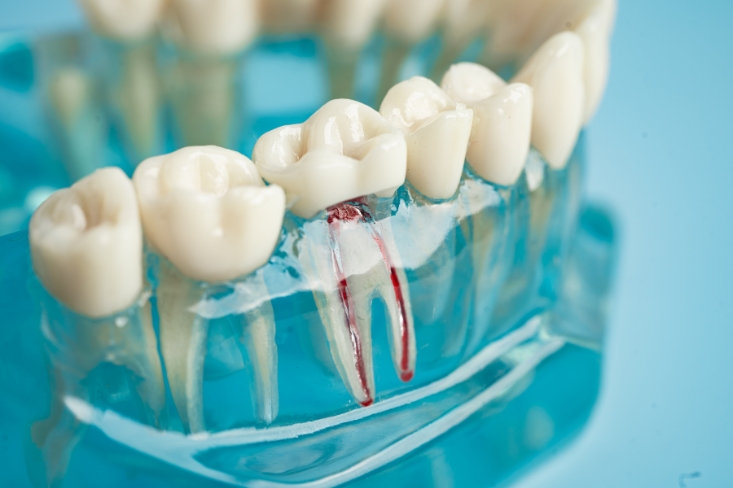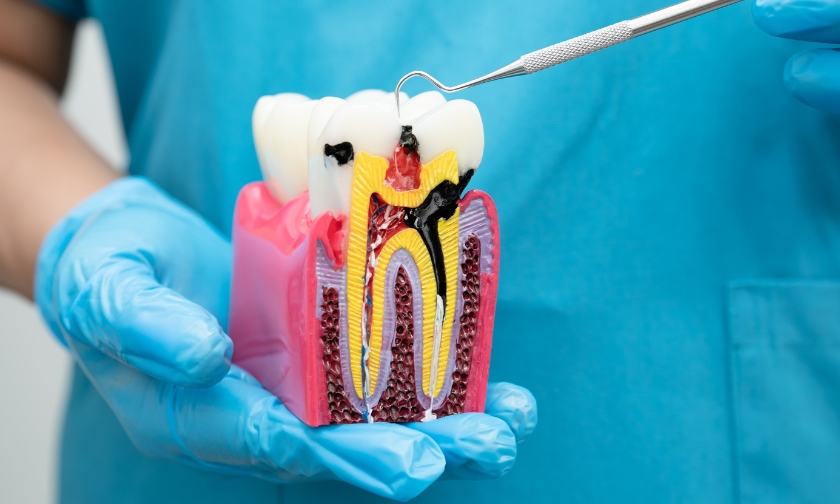704-844-2943
AVAILABLE FOR EMERGENCIESWhat Are the Three Types of Root Canal Procedures?

Toothaches are capable enough of spoiling a perfect day. An infected tooth is usually the culprit. If you ignore an infected tooth, it can be very painful. Here comes the role of root canal procedures to salvage damaged teeth and end pain.
Most people are afraid of them. However, they are painless with today’s methods. Severe decay, deep cavities, or trauma can lead to a root canal. The severity of infection determines the type of root canal treatment. Some procedures require a standard process, and others require surgery.
Three Types of Root Canal Procedures
1. Conventional Root Canal Treatment
A routine root canal treatment Matthews has the ability to eliminate infection and preserve the natural tooth. Dentists start by anesthetizing the area. This helps them make the procedure pain-free.
The infected pulp within the tooth is removed with caution. Dentists use specialized instruments to clean and shape the root canals to avoid future infections. Once done, dentists fill the canals with a biocompatible material and seal them. At the end, the tooth structure is reinforced with a dental crown.
This treatment is necessary when deep decay, a fractured tooth, or multiple dental procedures cause infection. If you neglect the infection, it may lead to severe pain, abscess, or tooth loss.
Recovery is generally rapid, with slight discomfort for a few days. Most patients resume normal activities the following day. Root canal treatments are very effective and have success rates of over 95%. Good oral hygiene significantly maintains long-term results.
2. Endodontic Retreatment
A tooth that has previously been treated might become infected once more. Endodontic retreatment remarkably fixes a failed root canal treatment. In most cases, the failure results from incomplete cleansing, new bacteria infection, or an unobserved crack in the tooth.
During retreatment, the dentist returns to the tooth and removes the earlier filling. They clean the canals thoroughly to remove any remaining infection. After reshaping the canals, the dentist refills and seals them. Then, they place the new crown to replace lost strength and function.
This procedure is indicated if chronic pain, swelling, or reinfection symptoms develop. Failure to retreat causes severe problems, including the need to have the tooth extracted. The rate of success continues to be high. However, precise post-treatment is required.
Recovery is comparable to that of a routine root canal. Slight pain will linger for a couple of days. However, analgesics can keep it in check. Patients should follow aftercare measures to optimize outcomes.
3. Apicoectomy (Surgical Root Canal)
Dentists use an apicoectomy or surgical root canal to treat persistent infections after a routine procedure. When inflammation reaches the tip of the tooth root, surgery is required. Tiny cracks, invisible canals, or intricate root structures have the ability to prevent complete healing. In such instances, the infected root tip should be removed.
The process starts with local anaesthesia for convenience. A slight incision on the gum significantly helps to reveal the tooth root. After careful extraction, the infected root tip is removed, and the end of the canal is closed. The gum is then left to heal and is sutured back into place.
Recovery is marginally longer than that of a traditional root canal. You may get swelling or some mild discomfort for a day or two. Pain relief medication and proper care can immensely make the recovery smooth.
Apicoectomies have excellent success rates. They are a long-term solution when traditional root canal procedures do not work. Frequent dental checkups allow issues to be caught early and complications to be avoided.
Early intervention significantly avoids serious infections and teeth loss. If you neglect toothache, it can exacerbate issues and raise treatment expenditures. Regular checkups identify issues before they develop into something more serious. Visiting our dentists maintains the proper procedure for long-term oral well-being.
Tooth pain doesn’t have to interfere with everyday life. Timely root canal procedures guarantee a healthy and ache-free smile.

